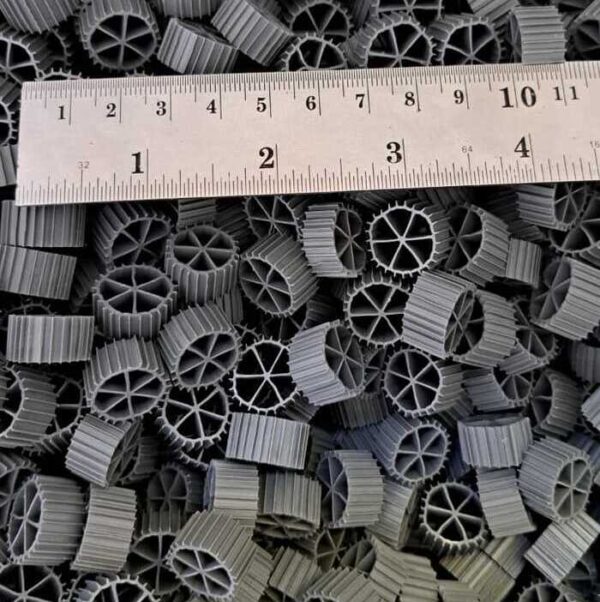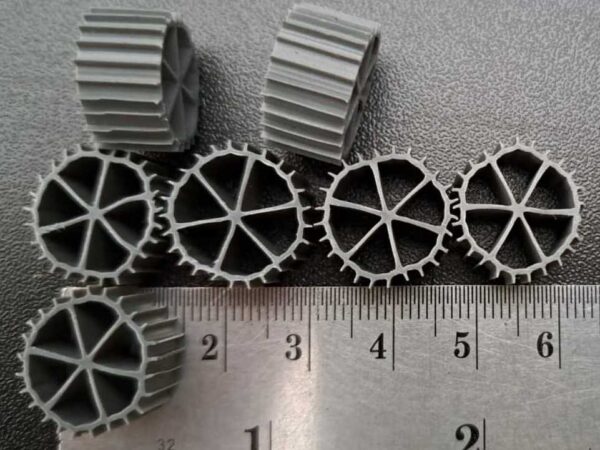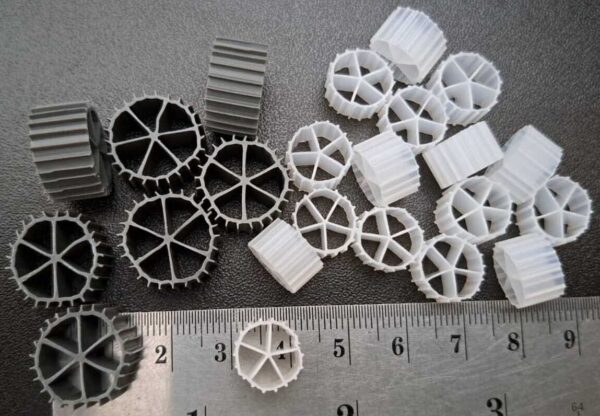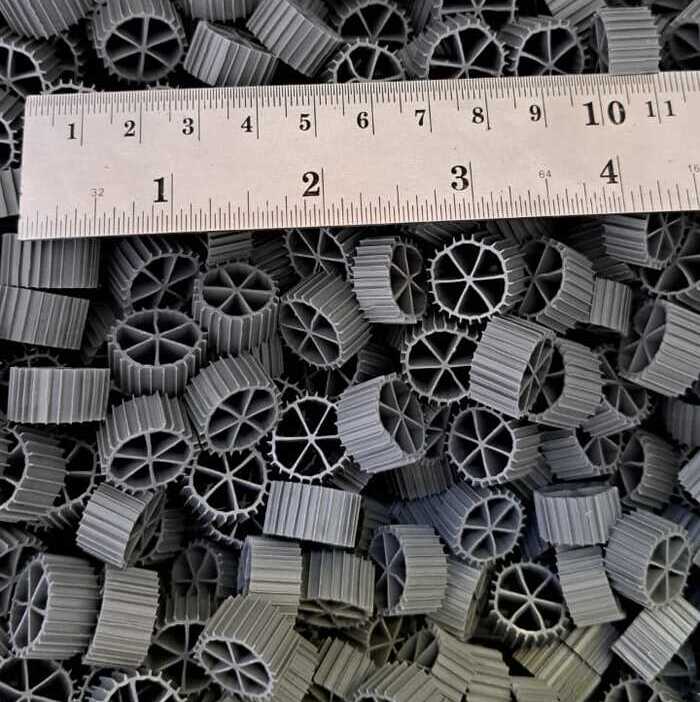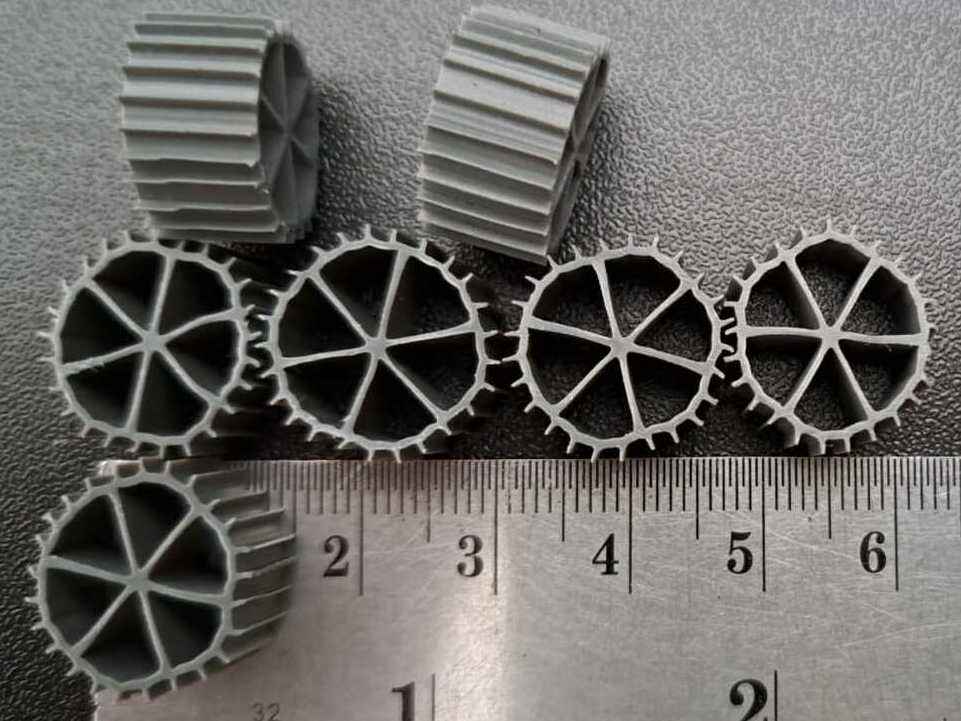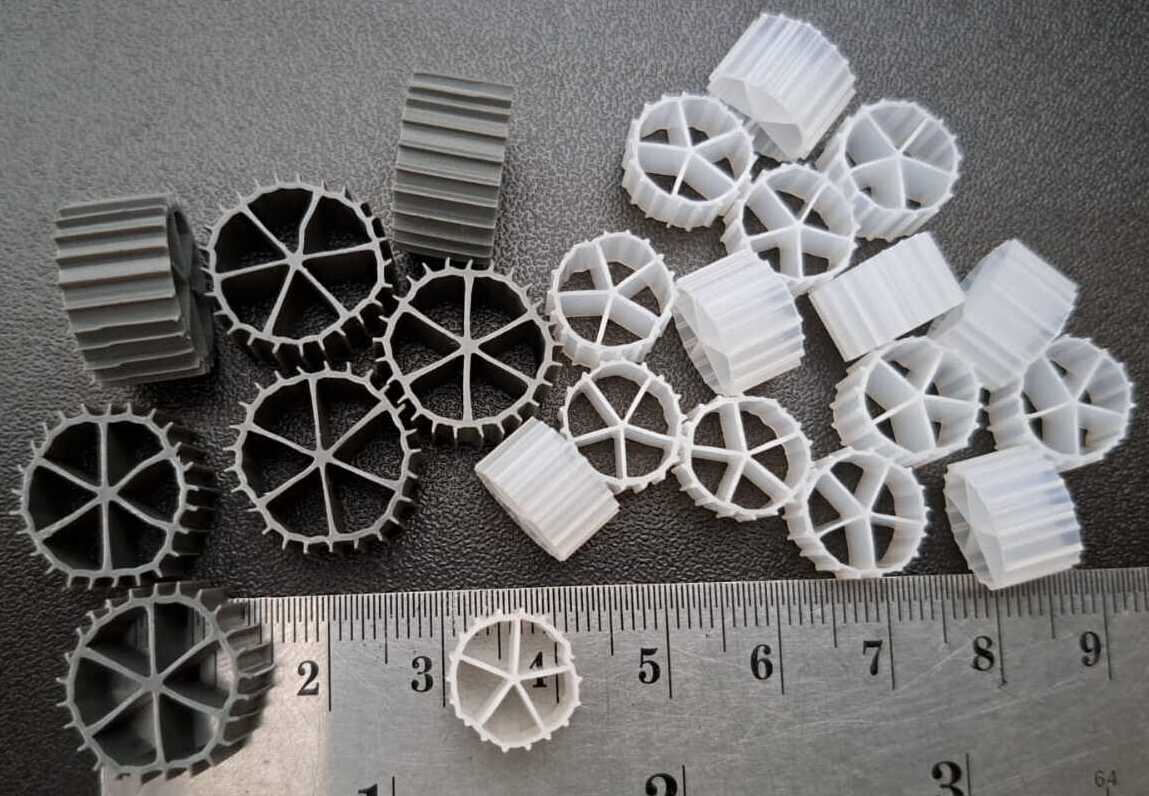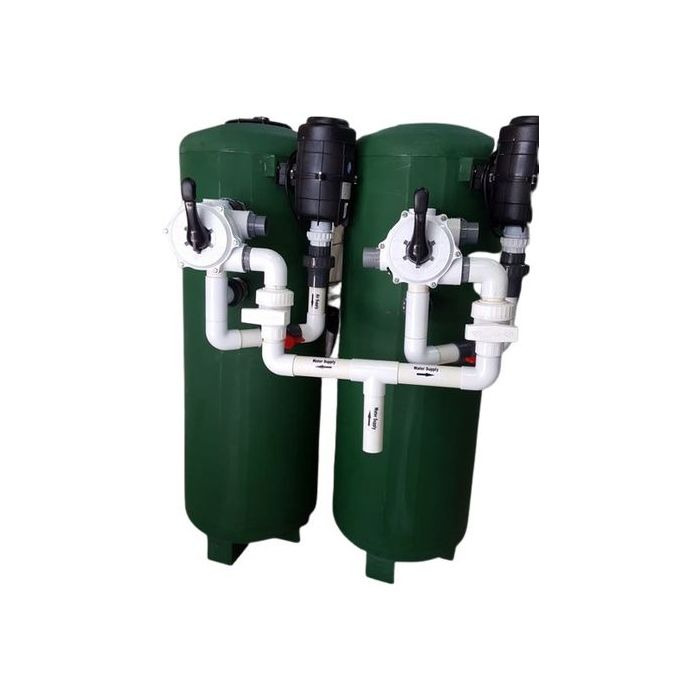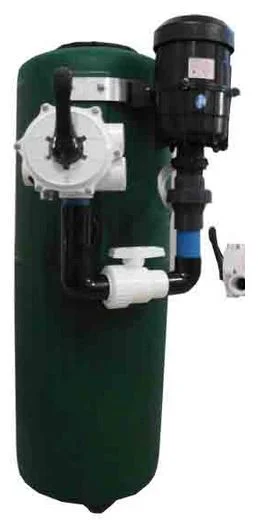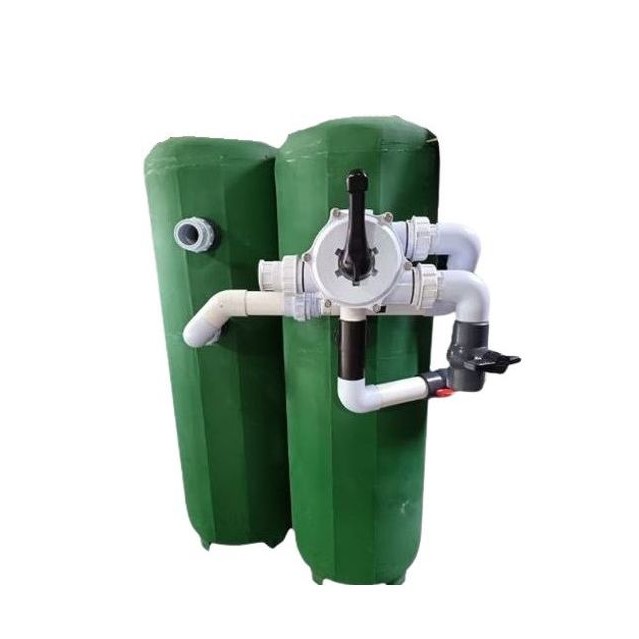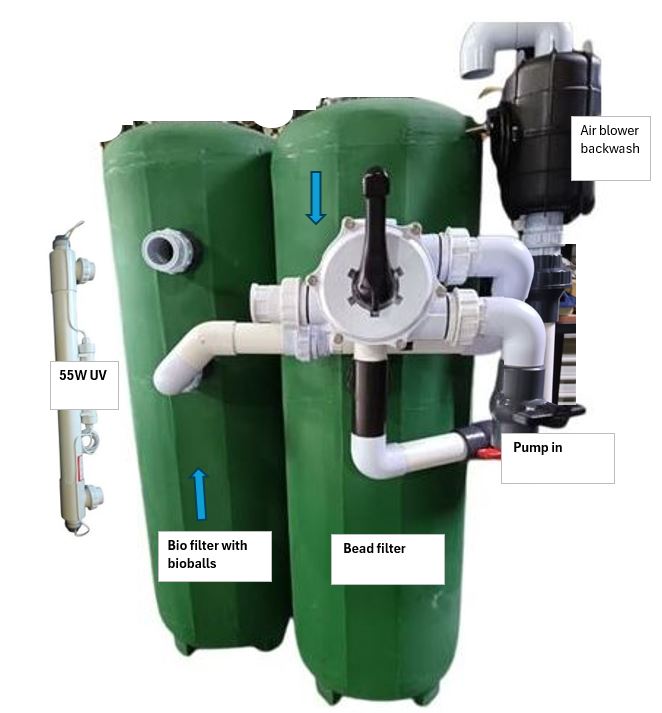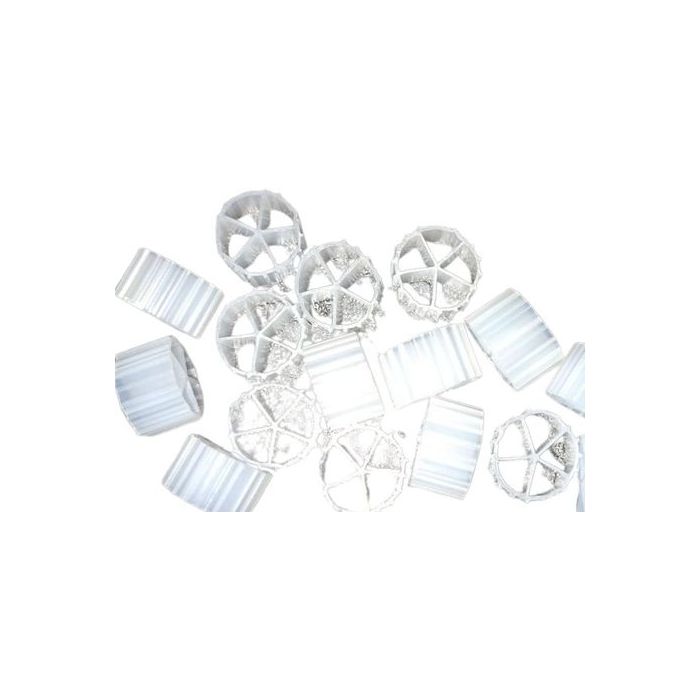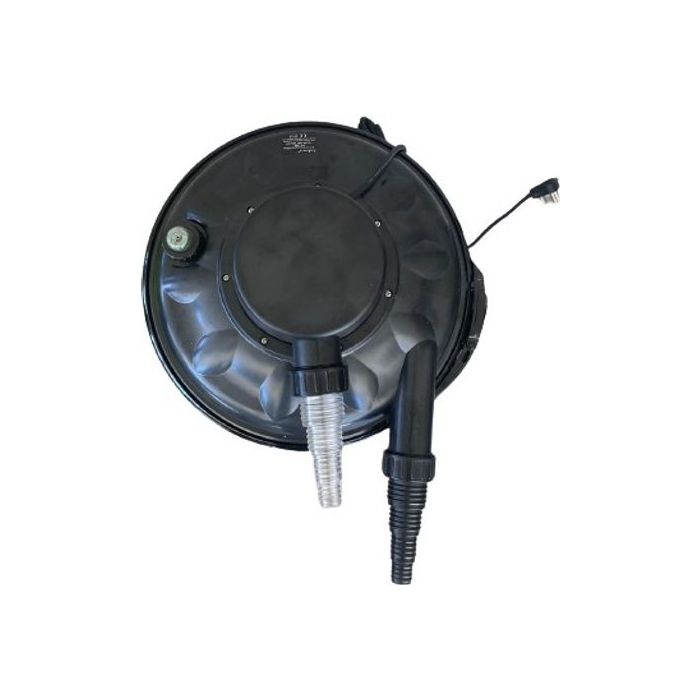Floating biofilter media, 100 liter
R1,033.00 Excl. VAT
100 liters biofilter media, recycled plastics, 6 internal rooms/spaces, 800m2/m3, black.
- Description
- Additional information
- Product video
- Quantity needed, tank size, air volumes needed
Description
Floating biofilter media
Floating biofilter media is a very effective biofiltration material. It needs to be aerated so that it tumbles slowly in the water and gets the necessary oxygen for the Notrosomonas and Nitrobacter bacteria to effectively convert toxic ammonia to non-toxic nitrates. It is used in small systems such as fish tanks and aquariums and massive industrial applications.
The biofilter media serves as a substrate for beneficial bacteria to grow and colonize. These bacteria play a crucial role in the biological filtration process by breaking down organic matter and converting harmful ammonia and nitrite into less harmful nitrate.
The unique design of the Kaldnes biofilter media provides a large surface area for the bacteria to attach and grow. The small plastic pieces have a high surface area to volume ratio, allowing for a large population of bacteria to thrive within a relatively small space. This high surface area also helps to promote efficient gas exchange, allowing the bacteria to access oxygen and other nutrients they need to perform their essential functions.
In an aquaculture system, koi ponds and aquariums, the biofilter media helps to maintain optimal water quality by removing ammonia that can be toxic to fish and other aquatic organisms. In a wastewater treatment system, the media plays a crucial role in removing pollutants from the water before it is discharged into the environment.
Overall, the Kaldnes biofilter media is an effective and efficient way to promote biological filtration and maintain water quality in a variety of applications.
Plastics are safe & inert for aquaculture etc.
Kaldness biofilter media
Kaldnes biofilter media is a type of biomedia used in the filtration of water in aquaculture and wastewater treatment systems. It was invented by Norwegian company Kaldnes Miljoteknologi AS in the late 1980s. The design has since been copied and multiple designs and product surface areas now exist.
The Kaldnes media consists of small, buoyant, plastic pieces with a unique design that provides a large surface area for bacterial growth. The media’s design creates a self-cleaning process, where the movement of the water causes the plastic media to rub against each other and remove excess biofilm. This helps to maintain optimal conditions for bacteria to break down organic matter and ammonia in the water.
The Kaldnes biofilter media is commonly used in Moving Bed Biofilm Reactors (MBBRs), which are popular in aquaculture and wastewater treatment applications due to their efficiency and ease of operation. The media’s unique design allows for a high level of surface area per unit volume, which provides a large space for bacteria to grow and remove impurities from the water.
Additional information
| Weight | 14 kg |
|---|---|
| Dimensions | 70 × 50 × 35 cm |
Background video
How do I used the biofilter media?
Quantity of biofilter media needed
For Koi & fish: maximum of 0.25kgs of food per day per 50 litres used, to ensure the best possible water parameters are achieved. If a higher feed rate is required, extra media can easily be added. Koi are typically fed at between 1% – 2% of body weight per day. For every 5 grams of food fed, 1 1itre of K1 media is required. For large commercial systems, the quantity is less and based on daily feed rates. Please send us your feed rate and fish biomass and we can advise the amount needed. Typically, this is about 130 liters media per kg of daily feed. One aquaponics system reported using 62.5 liters media per kilogram of daily feed. This is low, possibly as other areas in the aquaponics system also work as biofilter surfaces.
Tank size needed
Biofilter media fill volume in tanks is 50 to 65% of total tank volume, so a 100 liter tank can hold 50 liters to 65 liters of media.
Air needed
Media must be aerated for ammonia conversion as the bacteria are aerobic. Aeration is needed at 120 to 250 liters per minute of air per cubic meter of media. We supply blowers for this application. We also supply air diffusers of different sizes and micropore diffuser hose. A koi or fish system with 50 liters of biofilter media needs about 10-15 lpm of aeration. A 2 inch air stone delivers around 4 lpm, so 3 airstones should be enough for 50 liters media.
Technical video


